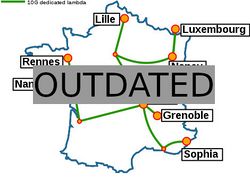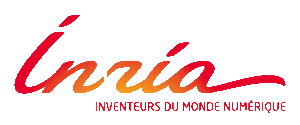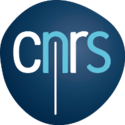Grid5000:Home: Difference between revisions
No edit summary |
No edit summary |
||
| (9 intermediate revisions by 3 users not shown) | |||
| Line 7: | Line 7: | ||
Key features: | Key features: | ||
* provides '''access to a large amount of resources''': | * provides '''access to a large amount of resources''': 12000 cores, 800 compute-nodes grouped in homogeneous clusters, and featuring various technologies: GPU, SSD, NVMe, 10G and 25G Ethernet, Infiniband, Omni-Path | ||
* '''highly reconfigurable and controllable''': researchers can experiment with a fully customized software stack thanks to bare-metal deployment features, and can isolate their experiment at the networking layer | * '''highly reconfigurable and controllable''': researchers can experiment with a fully customized software stack thanks to bare-metal deployment features, and can isolate their experiment at the networking layer | ||
* '''advanced monitoring and measurement features for traces collection of networking and power consumption''', providing a deep understanding of experiments | * '''advanced monitoring and measurement features for traces collection of networking and power consumption''', providing a deep understanding of experiments | ||
| Line 17: | Line 17: | ||
<br> | <br> | ||
Recently published documents: | Recently published documents and presentations: | ||
* [https://www.grid5000.fr/slides/2014-09-24-Cluster2014-KeynoteFD-v2.pdf Slides from Frederic Desprez's keynote at IEEE CLUSTER 2014] | * [http://www.silecs.net/wp-content/uploads/2018/04/nussbaum-grid5000.pdf Presentation of Grid'5000] during the 1st Grid'5000-FIT school (April 2018) | ||
* [https://www.grid5000.fr/ScientificCommittee/SAB%20report%20final%20short.pdf Report from the Grid'5000 Science Advisory Board | * [https://www.grid5000.fr/mediawiki/images/Grid5000_science-advisory-board_report_2018.pdf Report from the Grid'5000 Science Advisory Board (2018)] | ||
* Grid'5000 is merging with FIT to build the SILECS Infrastructure for Large-scale Experimental Computer Science. Read [http://www.silecs.net/wp-content/uploads/2018/04/Desprez-SILECS.pdf an Introduction to SILECS] (April 2018) | |||
Older documents: | |||
* https://www.grid5000.fr/slides/2014-09-24-Cluster2014-KeynoteFD-v2.pdf Slides from Frederic Desprez's keynote at IEEE CLUSTER 2014] | |||
* [https://www.grid5000.fr/ScientificCommittee/SAB%20report%20final%20short.pdf Report from the Grid'5000 Science Advisory Board (2014)] | |||
<br> | <br> | ||
| Line 27: | Line 32: | ||
<br> | <br> | ||
{{#status:0|0|0|http://bugzilla.grid5000.fr/status/upcoming.json}} | {{#status:0|0|0|http://bugzilla.grid5000.fr/status/upcoming.json}} | ||
<br> | |||
== Random pick of publications == | |||
{{#publications:}} | {{#publications:}} | ||
| Line 78: | Line 85: | ||
Champagne-Ardenne<br/> | Champagne-Ardenne<br/> | ||
Provence Alpes Côte d'Azur<br/> | Provence Alpes Côte d'Azur<br/> | ||
Hauts de France<br/> | |||
Lorraine<br/> | Lorraine<br/> | ||
|} | |} | ||
Revision as of 10:05, 9 November 2018
|
Grid'5000 is a large-scale and versatile testbed for experiment-driven research in all areas of computer science, with a focus on parallel and distributed computing including Cloud, HPC and Big Data. Key features:
Older documents:
|
Random pick of publications
Five random publications that benefited from Grid'5000 (at least 2517 overall):
- Shakeel Sheikh, Md Sahidullah, Fabrice Hirsch, Slim Ouni. Machine Learning for Stuttering Identification: Review, Challenges & Future Directions. Neurocomputing, 2022, 514 (2022), pp.17. 10.1016/j.neucom.2022.10.015. hal-03634072v2 view on HAL pdf
- Daniel Rosendo, Kate Keahey, Alexandru Costan, Matthieu Simonin, Patrick Valduriez, et al.. KheOps: Cost-effective Repeatability, Reproducibility, and Replicability of Edge-to-Cloud Experiments. REP 2023 - ACM Conference on Reproducibility and Replicability, Jun 2023, Santa Cruz, CA, United States. pp.62-73, 10.1145/3589806.3600032. hal-04157720 view on HAL pdf
- Ismail Hawila, Sophie Cerf, Raphaël Bleuse, Swann Perarnau, Eric Rutten. Adaptive Power Control for Sober High-Performance Computing. CCTA 2022 - 6th IEEE Conference on Control Technology and Applications, Aug 2022, Trieste, Italy. pp.1-8. hal-03765849 view on HAL pdf
- Danilo Carastan dos Santos, Thi Hoang Thi Pham. Understanding the Energy Consumption of HPC Scale Artificial Intelligence. CARLA 2022 - Latin America High Performance Computing Conference, Sep 2022, Porto Alegre, Brazil. pp.1-14. hal-03845090 view on HAL pdf
- Daniel Rosendo. Methodologies for Reproducible Analysis of Workflows on the Edge-to-Cloud Continuum. Distributed, Parallel, and Cluster Computing cs.DC. INSA RENNES, 2023. English. NNT : . tel-04167278 view on HAL pdf
Latest news
Failed to load RSS feed from https://www.grid5000.fr/mediawiki/index.php?title=News&action=feed&feed=atom: Error parsing XML for RSS
Grid'5000 sites
Current funding
As from June 2008, Inria is the main contributor to Grid'5000 funding.
INRIA |
CNRS |
UniversitiesUniversité Grenoble Alpes, Grenoble INP |
Regional councilsAquitaine |


